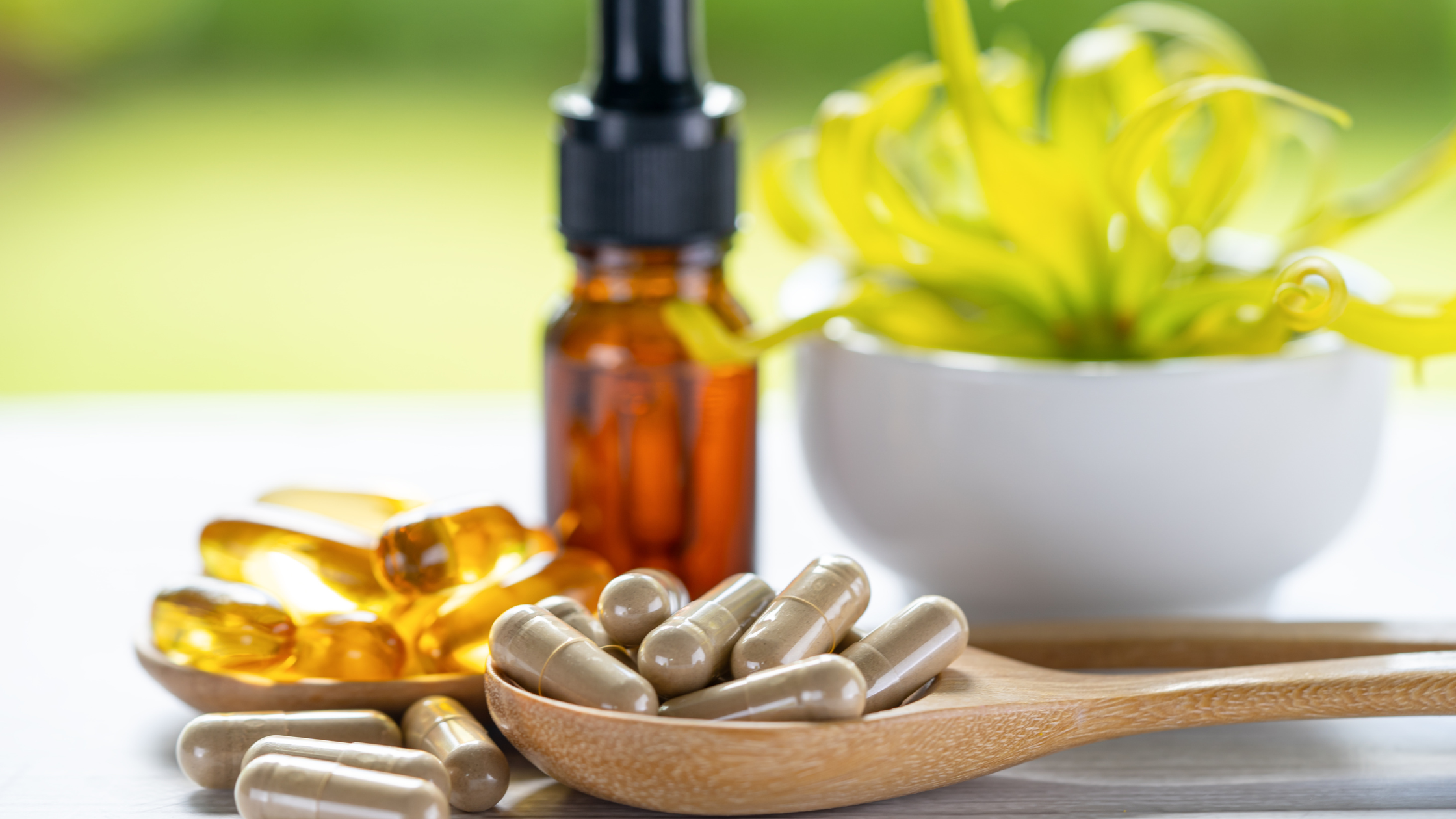


Medically Reviewed By Margaret Etudo. Written By The Vitamins For Woman Team.
Dry, brittle nails don’t just ruin your manicure; they’re a sign that something more profound might happen with your body or routine.

Have you ever looked at your nails and wondered, “Why are my nails so dry and brittle?” You’re not alone if you’re dealing with flaky tips, painful splits, or nails that peel as fast as you paint them.
Dry nails are a widespread problem, especially among women, and they often go beyond cosmetic inconvenience.
Nails, much like hair and skin, are a reflection of your internal health. When something’s off, whether it’s your nutrient levels, hydration, or exposure to damaging chemicals, it can appear on your fingertips first.
While dry peeling nails may look like a result of too much polish or water, the real causes often lie deeper.
From low iron and biotin deficiencies to over-washing your hands, there are several surprising reasons your nails might be suffering.
Whether you’ve been struggling with nail damage for years or are just starting to notice a change, this guide will help you understand your nail health inside and out.
Dry, brittle nails aren’t just caused by nail polish remover or winter weather. Some surprising internal imbalances and habits might be behind your nail woes.
Nutritional deficiencies are one of the most common causes of dry nails. Your nails are made of keratin, a protein that needs key nutrients to grow strong and stay hydrated.
When those nutrients are lacking in your diet, nails become thin, brittle, and prone to peeling or breaking.
Low iron, for example, is often linked to spoon-shaped nails, a condition called koilonychia. Iron helps carry oxygen to the cells that support nail growth.
Without it, your nails can become soft, dry, and thin. Another major player is Biotin (vitamin B7), which helps strengthen the keratin structure in nails.
Studies have shown that biotin supplementation can increase nail thickness and reduce splitting in individuals with brittle nails.
Also, don’t underestimate omega-3 fatty acids; they help nourish nail cells from within and maintain moisture levels.
Water might seem harmless, but when your hands are constantly in and out of it, like during dishwashing or frequent handwashing, it can lead to dry nails. Nails are porous, which means they absorb water easily.
But paradoxically, too much water causes them to swell and contract repeatedly, weakening the nail structure and causing flakiness over time.
The problem is even worse if exposed to soaps, detergents, and cleaning chemicals. These products strip away the natural oils from your skin and nails, leaving them dry and unprotected.
Nail polish removers, especially those with acetone, can worsen things by dehydrating the nail plate and cuticles.
Our bodies naturally produce less oil as we age, and the result shows up in our skin and nails. The nail matrix, where nail growth starts, can slow down, and the moisture content of nails diminishes.
You might notice that your nails have become more fragile, take longer to grow, or develop ridges and lines.
Age-related dry nails are particularly common in women approaching or experiencing menopause.
Hormonal changes, including a drop in estrogen, can affect collagen production and moisture retention, leaving nails thinner and more vulnerable to external stressors.
If you’re experiencing consistently dry, brittle nails along with fatigue, weight gain, or cold intolerance, your thyroid might be to blame.
Hypothyroidism, or an underactive thyroid gland, slows your metabolism and can affect the body’s ability to deliver nutrients and oxygen to the nails.
People with low thyroid hormone levels often report nail splitting, peeling, or a slow rate of nail growth.
A simple blood test can help determine if your thyroid is functioning normally, and treatment can dramatically improve nail health over time.
It’s important not to ignore nail dryness that doesn’t improve with diet or topical care. Your thyroid might be trying to get your attention.
From gel manicures to acrylics and polish removers, beauty habits can damage your nails more than you realize. Gel nails require curing under UV light and often involve harsh filing of the nail bed.
Acrylic nails can suffocate the natural nail, leading to brittleness and even fungal infections.
Even traditional nail polish removers, especially those with acetone, can be extremely drying. They strip away oils from your nail plate and can lead to excessive peeling and cracking if used frequently.
Since nails are made up of keratin, it’s no surprise that protein plays a central role in their health. If your diet lacks protein, your nails may become soft, flaky, and visibly weaker.
Hair and nails are among the first areas to show signs of protein deficiency because they are considered non-essential by the body when nutrients are scarce.
Protein is essential for nail formation, repair, and strength. Without enough, your nails won’t have the building blocks they need to grow or stay intact.
Dehydration doesn’t only cause dry skin and fatigue. It can dramatically affect your nail health, too. When the body lacks sufficient hydration, it prioritizes vital organs over cosmetic structures like hair and nails.
As a result, your nails may become brittle, break more easily, and appear dull. Evaluate your water intake if your nails are cracking at the tips or peeling.
Before you treat your nails, knowing what’s causing the dryness is essential. Use this simple at-home test to check your nails’ moisture levels and texture.
Want to know if your nails are truly dry or just damaged? Try this: soak your fingernails in lukewarm water for 5 to 10 minutes.
Then press gently on each nail or try to bend the tip. If your nail bends easily without breaking, it’s well-moisturized. If it remains rigid or snaps, it likely lacks moisture.
This test helps you determine if your nails need hydration or structural strengthening. If your nails bend too easily, even when dry, you may have weak nails due to nutrient deficiencies, not just dehydration.
This kind of at-home diagnosis can help guide your next steps, whether adjusting your diet or choosing a specific nail treatment.
Healing dry, peeling nails takes consistency, nourishment, and patience. Here are five dermatologist-recommended and DIY strategies to repair brittle nails naturally.
One of the most effective remedies for dry nails is a simple, homemade soak made from olive oil and honey. Warm one tablespoon of olive oil with one teaspoon of honey, then soak your fingertips for 10–15 minutes.
The olive oil deeply penetrates the nail plate and surrounding skin, restoring elasticity, while honey acts as a humectant, attracting and locking in moisture.
Doing this twice to thrice a week can dramatically soften your cuticles and strengthen the nail bed.
For more severe dryness and brittleness, over-the-counter creams may not be enough. Prescription nail treatments often contain urea, lactic acid, or alpha hydroxy acids, which exfoliate dry, damaged nail cells and allow moisture to penetrate deeper.
Dermatologists may also recommend topical treatments that include ceramides and peptides to restore the skin barrier.
If your dry nails are due to an underlying condition like eczema or hypothyroidism, your doctor can prescribe creams targeting inflammation or hormonal imbalance.
Biotin is one of the most researched supplements for brittle nails. Daily supplementation of 2.5 mg of Biotin has improved nail thickness and firmness over 4–6 months.
Other beneficial supplements include vitamin B12, zinc, and collagen peptides. Choose a supplement explicitly formulated for nail health, and be consistent with daily intake.
Small changes in your routine can lead to significant improvements in nail health. Always wear rubber gloves when using cleaning products or washing dishes. Avoid nail-biting or using your nails as tools to open cans or peel labels.
File your nails gently in one direction rather than sawing back and forth. Taking breaks from polish and giving your nails time to breathe can promote healing.
What is the easiest way to fix dry nails? Drink more water and eat a nail-loving diet. That means lots of leafy greens, lean proteins, nuts, seeds, and fatty fish.
Incorporate vitamin E, B vitamins, and omega-3s into your daily intake, whether through food or supplements.
Eating for nail health can improve your results far more effectively than any polish or cream. It’s slow but sustainable.
Yes. Chronic dry, brittle nails can indicate iron deficiency anemia, thyroid dysfunction, or autoimmune disorders. Consult a healthcare provider if you’re also experiencing fatigue, weight gain, or hair loss.
Nails grow at an average rate of 2–3 mm per month. With consistent care, improvements in strength and hydration typically appear within 6–12 weeks. Complete restoration may take 3 to 6 months.
Absolutely. Petroleum jelly helps seal in moisture and protect nails from external elements. Apply it nightly on nails and cuticles, then cover with gloves or socks to lock in hydration.
Dry nails are more than just an aesthetic issue; they’re often your body’s way of signalling imbalance. By understanding the most common causes of dry nails, from poor nutrition to overuse of harsh products, you can begin to restore your nails’ health naturally and effectively.
The road to strong, hydrated nails requires more than just surface-level fixes. Treat your nails from the inside out with balanced nutrition, gentle products, and protective habits. With time and consistency, you’ll fix dry nails and prevent them from returning.

medically reviewed by margaret etudo, BPharm. written by the vitamins for woman team.